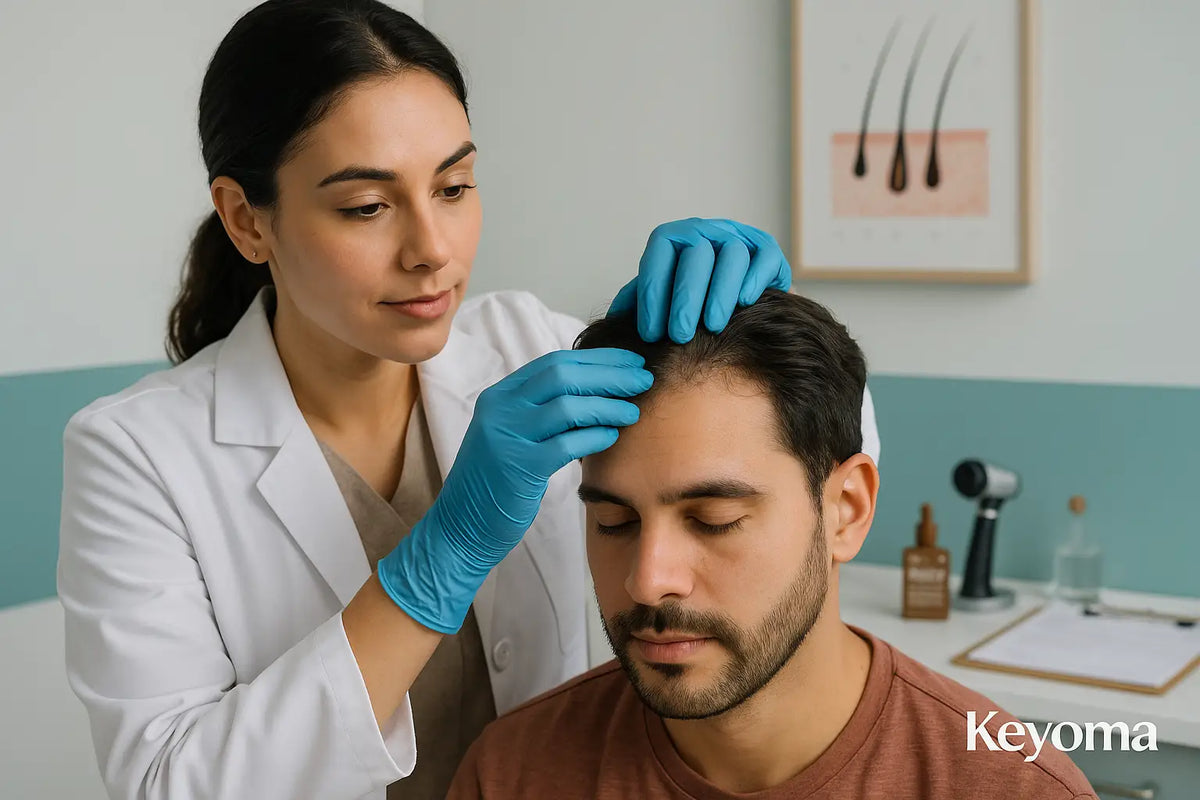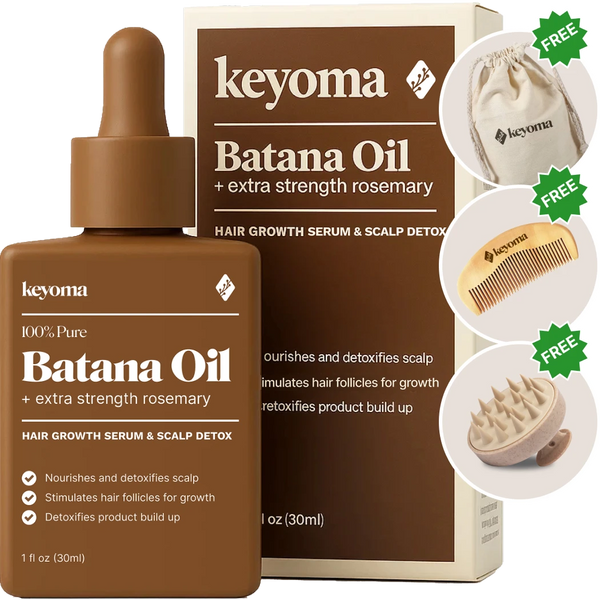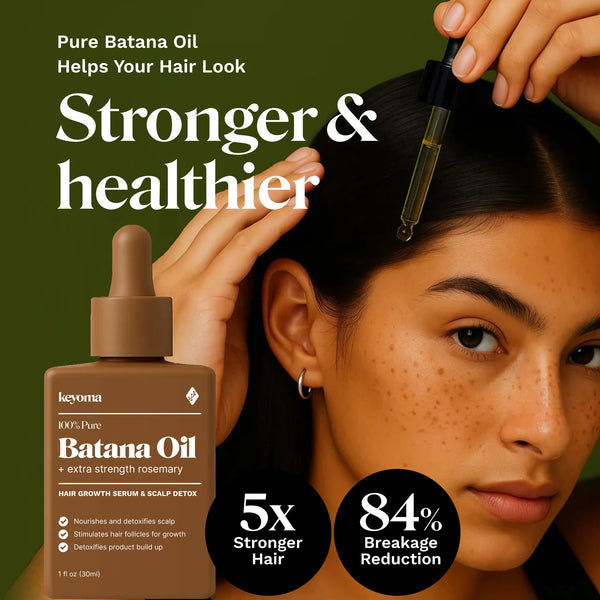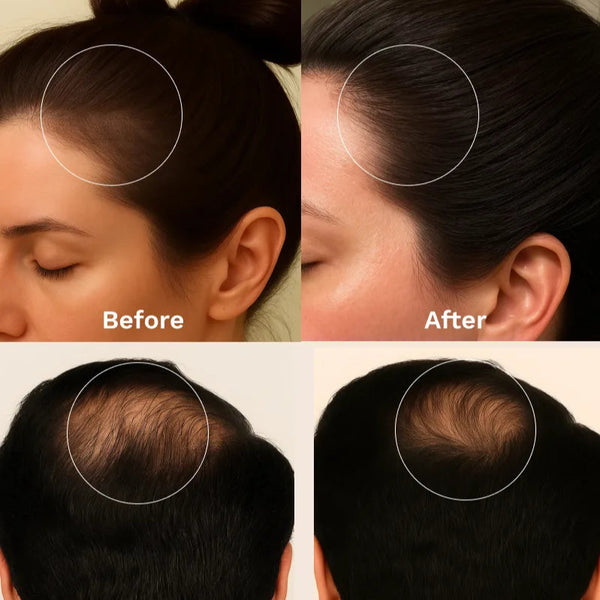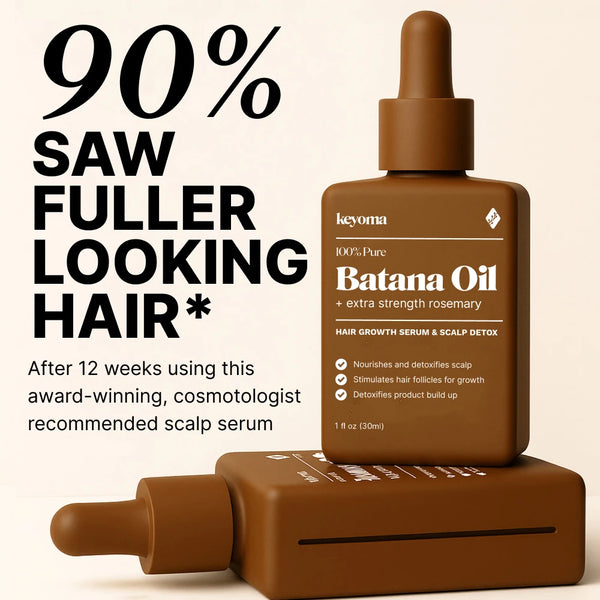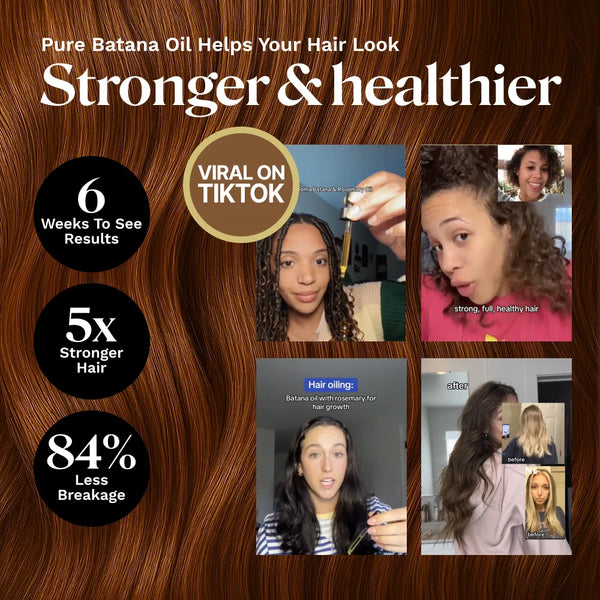In this article
If you live with hair thinning, you likely look for proven non-surgical hair restoration options. Hair loss affects over 85% of men and 55% of women across a lifetime, often lowering confidence, so choosing effective answers for your hair shedding can matter a great deal.
When you notice the first signs of hair thinning and balding, a hair transplant may sound appealing. It is viewed as a straightforward, safe, long-lasting option. Because a hair transplant is permanent, you may keep the results for years.
Still, not everyone with excessive shedding needs, wants, or qualifies for surgery. The good news is that many effective, research-backed alternatives can support non-surgical hair restoration.
Natural oils like rosemary and batana, medications such as Minoxidil or Finasteride, and therapies including PRP hair treatments or low-level laser therapy can reduce loss and encourage hair growth. Cosmetic hair replacements, such as modern hair systems, can hide your thinning hair without surgery.
Key Takeaways
-
Hair loss affects over 85% men and 55% women; non-surgical options exist.
-
Medications include minoxidil to prolong growth, finasteride and dutasteride reducing DHT to slow thinning.
-
Procedures like PRP, low-level lasers, and microneedling stimulate follicles; results and protocols vary.
-
Cosmetic options mask thinning, and supplements with botanicals may support growth alongside other therapies.
11 Non-Surgical Hair Restoration Options
From medications and in-office therapies to options that cover thinning areas, several non-surgical choices can help. These are among the most effective.

Platelet-Rich Plasma (PRP)
For PRP, your provider draws a small amount of your blood, spins it to isolate the platelets from other cells, then mixes those platelets back into the plasma. That matters because platelets contain hundreds of growth factors that aid repair.
Since PRP holds far more platelets than regular blood, it is used to help wounds, tendon injuries, and arthritis pain.
Some clinicians now use PRP to support hair regrowth. They inject it into your scalp using a fine needle so the growth factors can stimulate follicles.
There is no single protocol yet. Many start with three sessions. After a few months, your hair may look fuller than before. In one study, most participants were satisfied and reported improvement. A booster at about 6 months can be suggested when progress slows.
Side effects are uncommon, though some people find the injections uncomfortable, even with numbing.
Some surgeons also add PRP during hair transplants to support early growth or pair it with other therapies. PRP studies are encouraging, but we still do not know how long the benefits last.
Derma Rolling (Microneedling)
This approach may look intimidating, but derma rolling for hair growth is typically painless and can work similarly to rosemary. You roll a tool with tiny needles across your scalp, creating micro punctures that signal your body to send healing and growth factors to the follicles. Over time, this can support better growth.
You can use a derma roller for hair growth at home and combine it with other treatments for stronger results. I noticed 0.5 mm needles were gentler and easier to control. For example, using Keyoma batana oil with rosemary can raise hair counts more than either alone, likely because micro punctures improve topical absorption.
Low-Level Laser Therapy (LLLT)
Experts are not entirely sure how this gentle light therapy slows hair loss. It may encourage more follicles to enter growth, speed up cell turnover, or improve cellular function.
Low-level lasers do not heat up, hurt, or burn tissue. Instead, they appear to increase blood flow to the roots, delivering nutrients and energy that support growth.
You can get LLLT at a clinic or use devices at home, like a laser comb, headband, or a small helmet that fits beneath a cap.
Most people prefer home devices. You can use them on your schedule (about 15 minutes, three times weekly), and they usually cost less than office visits.
When LLLT helps, you can expect thicker-looking hair in about 6 months, similar to other therapies. It will not help if you are completely bald.
More research is needed to determine the optimal routine and how long results last.
Batana Oil with Rosemary
The combination of batana oil and rosemary puts scalp care and nourishment in one place. You get rosemary’s scalp stimulation alongside batana’s conditioning fats. You can choose Keyoma batana oil with rosemary if you want both in a single step.
Rosemary essential oil may support thicker hair and new growth by boosting cellular activity.
In a 2015 study, rosemary oil performed comparably to minoxidil, a common hair growth treatment, with fewer reports of scalp itch. Other studies have used it for alopecia in blends of essential oils.
Even so, larger trials are needed to confirm effectiveness, especially in people without alopecia.
Batana oil has nutrients that nourish hair, and social media features many user testimonials about its effects. Palm oil is rich in vitamin E, an antioxidant that helps protect cells.
Vitamin E may also help hydrate, soften, and nourish your skin. While not directly tied to regrowth, it can leave hair feeling a bit healthier.
Supplements
Some supplements and nutraceuticals have been shown to support growth and enhance other treatments. Many include phytochemicals, plant-based compounds that affect the body in different ways.
Nutrafol is a popular option with curcumin, piperine, ashwagandha, saw palmetto, tocotrienols, and others that help stimulate cell growth, support cell health, reduce cortisol, build amino acids, and calm inflammation.
Viviscal is another well-known choice, using compounds from sustainably sourced mollusk and shark powders plus plant ingredients. It offers similar benefits and has also been shown to improve skin elasticity and thickness while supporting growth.
Minoxidil
Sold as Rogaine, this vasodilator widens blood vessels so more blood can pass through them. Because scalp capillaries are tiny, dilation helps follicles receive extra oxygen and nutrients, keeping them in growth longer and producing thicker, denser strands.
Topical Minoxidil is most common, offering strong results without the potential systemic effects of oral Minoxidil. This medication is versatile and may help stimulate your follicles for hair growth
Finasteride
Known by brand names Propecia and Proscar, Finasteride can be highly effective for reducing androgenetic alopecia. This type of alopecia occurs when 5-alpha reductase converts excess testosterone into dihydrotestosterone (DHT).
DHT binds to androgen receptors in follicles, shrinking them so they produce finer vellus hair or stop producing strands. Finasteride works by inhibiting 5-alpha reductase, lowering DHT in your blood, which can curb male and female pattern loss.
However, premenopausal women should not use Finasteride, as it can cause fetal malformations and hormonal changes. It may be prescribed off-label for women after reproductive age.
Dutasteride
Dutasteride acts through the same DHT-lowering mechanism as Finasteride. It reduces the activity of 5-alpha reductase, the enzyme that turns testosterone into DHT. Evidence suggests Dutasteride is more effective than Finasteride.
Finasteride inhibits 2 of the 3 types of 5-alpha reductase, while Dutasteride can lower activity in all 3. For comparison, Finasteride 1mg typically reduces blood DHT by about 70%. In contrast, Dutasteride 0.5 mg can lower it by over 98%, significantly increasing hair count and thickness.
Note that this drug is not FDA-approved for hair loss, so it is prescribed off-label. And, for the same reasons as Finasteride, premenopausal women should avoid Dutasteride.
Corticosteroids
Steroid creams are often applied to calm inflammation caused by autoimmune conditions that trigger hair loss, such as alopecia areata, lichen planopilaris, or even common scalp problems like scalp psoriasis or eczema.
If topical care is not enough, intra-lesional steroid injections can help. Research suggests they reduce hair loss in 60–70% of alopecia areata cases, and 83% of people with lichen planopilaris may achieve full remission.
Cosmetical hair replacement products
While these systems do not regrow hair, they can replace it with natural or synthetic alternatives and hide thinning effectively. Common options include:
-
Hair systems – semi-permanent wigs secured to your scalp that you can wear continuously for up to 6 months before replacement.
-
Toupees and hair extensions – pieces that can be glued or taped to the scalp or clipped to your own hair to conceal bald spots or add fullness. They are worn for shorter periods than hair systems and may be more noticeable depending on quality and materials. Learn more about hair extensions for men.
-
Spray-on hair – products that either add pigment close to your hair shade or deposit thickening fibers. Pigment reduces contrast like SMP. Thickening sprays use charged microfibers that cling to strands, making hair look denser.
Scalp Micropigmentation
Scalp micropigmentation (SMP) can be worth it for women and men who want to camouflage thinning. It can help when hair loss resists treatment, such as some forms of scarring alopecia, or to disguise accident or hair transplant scars.
It is essentially a hair tattoo, where microdots of pigment are placed in thinning areas to match your hair color. The dots follow your natural pattern, softening the contrast between skin and hair so sparse spots draw less attention.
Keep in mind, SMP works best for small areas or very short styles (like stubble). With advanced baldness and longer hair, the dots can stand out, leading to scalp micropigmentation regrets.
Start Your Non-Surgical Hair Loss Treatment with Keyoma
Start with your hair restoration using natural steps you can keep. Choose two treatments that fit your goals and budget, set a 12-week plan, and track progress with baseline photos in the same light. Keep heat low, avoid tight styles, and protect your scalp on sun and wash days.
Change only one variable at a time and note shedding, itch, and density each week so you can adjust early with your clinician. As a light pre-wash oil for scalp massage, use Keyoma Pure Batana Oil with Rosemary. Stay consistent, reorder supplies before they run out, and review results at three and six months.
Featured Product
100% Pure Batana Oil + Rosemary
↓Best Batana Oil to Buy↓
1 Month
Subscribe & Save
- 30-day supply delivered monthly $35
- 30% off for life $6
- Free haircare essentials kit $33
- Free custom wooden comb $10
- Free scalp massager $15
- Free eco-friendly travel bag $8
- 30-Day Money Back Guarantee
- Free Shipping
- Online portal for easy cancel, skip, or pause.
1 Month One Time Purchase
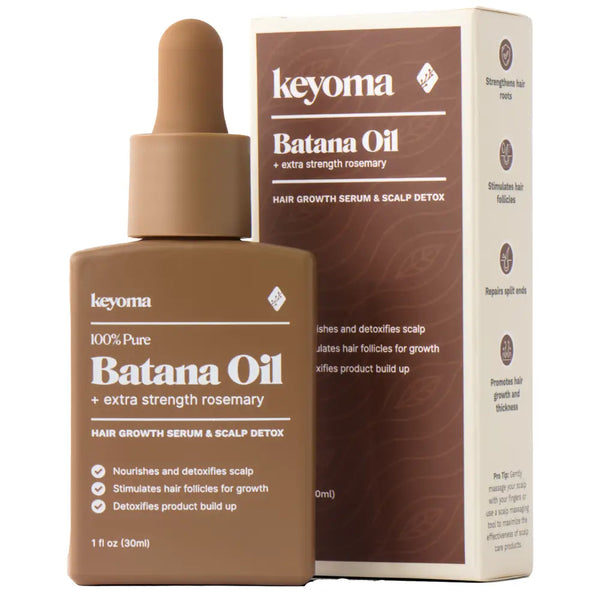
- 30-day supply $50
- 30% off for life $6
- Free haircare essentials kit $33
- Free custom wooden comb $10
- Free scalp massager $15
- Free eco-friendly travel bag $8

